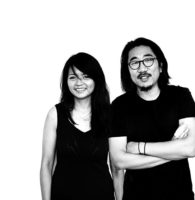Perugia, Italy
Two of italy’s greatest modern architects are known for their cemeteries. The Brion Cemetery near Treviso, carried out between 1968 and ’78, may be Carlo Scarpa’s most admired work. The San Cataldo Cemetery (1971) in Modena is, likewise, considered Aldo Rossi’s masterpiece. But now there is another notable Italian cemetery, outside of Gubbio, by architect Andrea Dragoni. In his extension of an existing cemetery, Dragoni, 47, who practices in nearby Perugia, created a series of buildings, walkways and public plazas that echo the rhythms of the medieval town less than a mile away. Four of the buildings are cubic “squares of silence,” meant for contemplation (and topped by openings inspired by the work of James Turrell). The travertine-clad volumes are so devoid of extraneous detail that they suggest fantasies of buildings, as if experienced in a dream.
The architect, who founded Studio Andrea Dragoni in 2006, often collaborates with artists. Asked to rethink the courtyard of a government building in Udine, he cut a square opening in the pavement to bring daylight and sky views to the lower level, and then, with sculptor Nicola Renzi, he introduced a paving pattern that makes what’s underfoot appear celestial. Now Dragoni is working on projects as formally pure as the cemetery, but with very different programs. With architects Alessandro Bulletti and Marco Palazzeschi, he proposed a public parking facility for Moena centered on a large covered walkway that reads as a kind of idealized loggia. In Perugia, he has designed social housing with a large front porch that overlooks a wooded park; the seemingly random distribution of the columns is a nod to the forest. All his projects, he says, create “dialogue between the accuracy of science and impressionism of poetry, between the real and the ideal.”
Dragoni has several projects in Milan. One is a warehouse for the Spanish glass company Vidrala, facing the Naviglio Grande canal. The building’s water-facing elevation of glass bricks was inspired by the gridded backdrops of many Eadweard Muybridge stop-action photographs, according to the architect. It is intended, he says, as a commentary on the different speeds at which pedestrians, cyclists, boaters, and motorists move past the building. Also in Milan, Dragoni has designed several structures in an extension of the historic Villa San Carlo Borromeo Park. They include a 250-room hotel and a small contemporary art museum. The half-moon shape of the hotel is generated by a river and canal that bracket it. Its glass front facade will be shaded by a stone brise soleil that Dragoni says will resonate with the surrounding tree canopy. In renderings, the hotel and its guest rooms look as minimally detailed as the structures at the Gubbio cemetery, part of Dragoni’s quest to translate “the suggestions from collective culture and imagination into habitable reality.” For Dragoni, that is the challenge as well as the promise.
Studio Andrea Dragoni
FOUNDED: 2006
DESIGN STAFF: 4
PRINCIPALS: Andrea Dragoni
EDUCATION: Faculty of architecture, University of Florence, M.Arch., 1997
WORK HISTORY: Metex, 1998–2001; Mapa (founding partner), 2001–04
KEY COMPLETED PROJECTS: Lesa House, 2015; Manrico Headquarters, Corciano, 2015; Vidrala Expansion, Milan-Corsico, 2014; Images Theater, Milan, 2013; Moena Parking, 2013; Gubbio Cemetery Expansion, 2011; Government Palace Public Spaces, Udine, 2010; Faculty of Pharmacy Laboratory, Perugia, 2009; Private Sacred Space, Perugia, 2006 (all in Italy)
KEY CURRENT PROJECTS: social housing, Perugia, 2016; residence, Assisi, 2016; industrial complex renovation, Corciano, 2016; movie theater adaptive reuse, Perugia, 2016; Vidrala warehouse, Milan-Corsico, 2015; Senago complex, Milan-Senago, 2013 (all in Italy)









